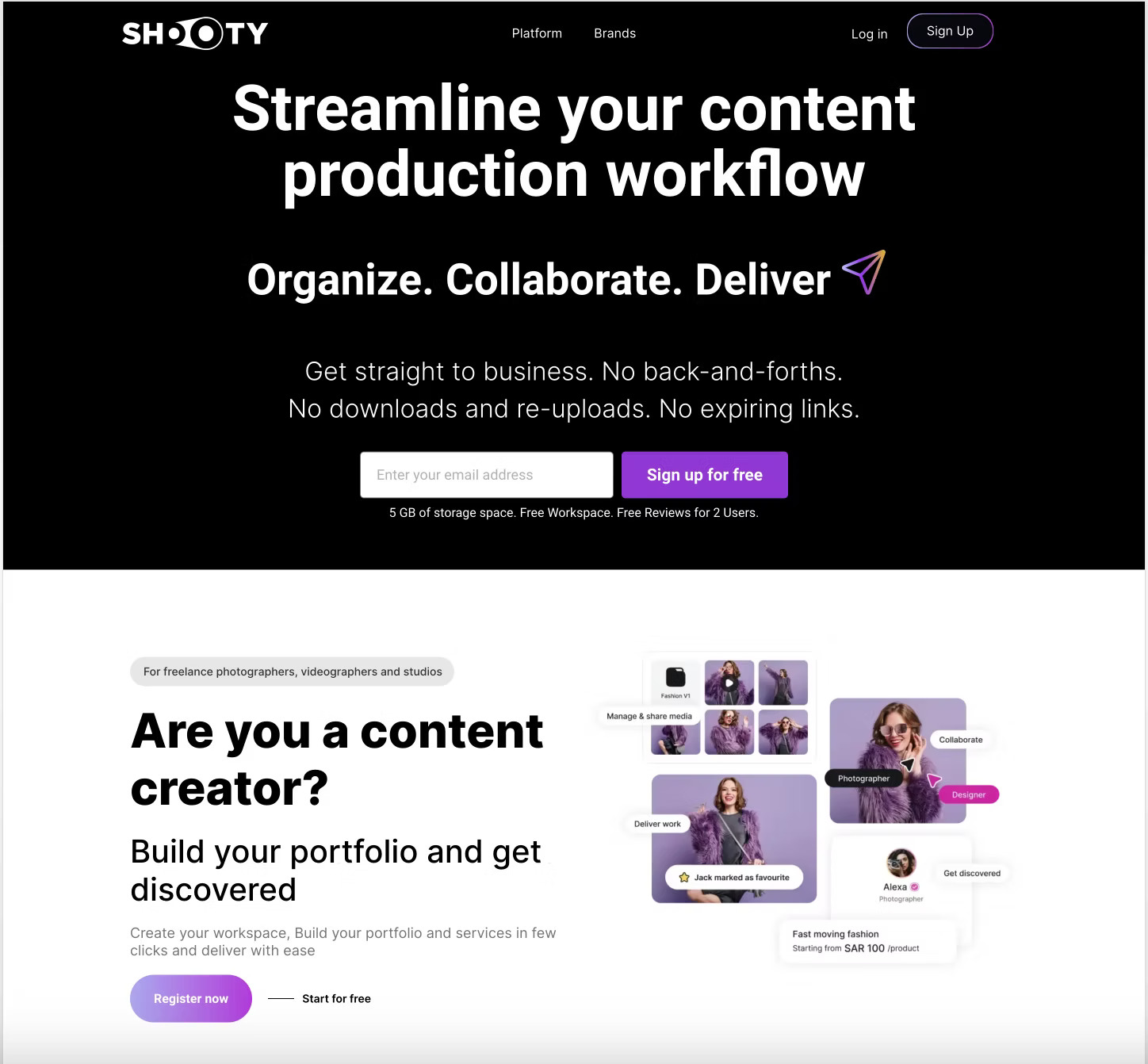How I Built and Launched a SaaS Platform for Creators and Got 5000 Signups in the First Month with Limited Budget
Jun 13, 2025

How I Built and Launched a SaaS Platform for Creators and Got 5000 Signups in the First Month with Limited Budget
Starting from Scratch
When I left SWVL, I joined Shooty, an early-stage startup with no product vision and a small tech team. The shift—from a structured product environment to a blank slate—forced me to build everything from the ground up.
The first challenge: what are we building?
The second: who do we need to build it?
Establishing a Product Vision
Shooty aimed to simplify content creation for digital creators. I narrowed the product vision to three pillars:
- Intuitive Workspaces – A clean, flexible interface for managing creative projects.
- Collaborative Tools – Real-time communication and asset sharing.
- Quality Control – Built-in review and approval workflows.
This became the product north star.
Product Discovery: Leveraging a Strategic Advantage
Shooty was born from Shapes Defined Photography, a premium e-commerce studio. This gave me direct access to our future customers—content creators and photographers.
My Process
- Stakeholder Interviews – To surface pain points and existing tool gaps.
- User Surveys – To prioritize feature development.
- Contextual Inquiry – To observe workflows and friction points.
- Competitive Analysis – To understand table stakes and whitespace.
- Persona Creation – To anchor development decisions around user archetypes.
Frameworks Used
- Jobs-to-be-Done (JTBD) – To map needs based on outcomes.
- Empathy Maps – To visualize motivation and friction.
- Lean Canvas – To test assumptions across value prop, channels, and cost structures.
Validating the Solution
We moved fast but methodically.
- Prototyping – For quick visual feedback.
- Usability Testing – To test interaction assumptions.
- Beta Testing – With high-context users from Shapes Defined.
Each iteration validated the core hypothesis: creative workflows are fragmented, and there’s a gap between asset creation and review.
Building a Lean, Global Team
We didn’t raise a large round. Every rupee mattered.
- We aimed to hire 8 engineers.
- We shipped v1 with 4—cutting tech costs by 50%.
- We hired globally, using strict filters for quality and alignment.
- Cultural fit, autonomy, and velocity were non-negotiables.
Result: a lean team, shipping fast and in sync.
Development and Execution
We adopted agile to stay responsive.
A major win: a workflow engine tailored for high-volume photo shoots.
It increased processing throughput by 30%.
Go-To-Market Strategy
There was no marketing team, no big budget.
What I did:
- Personally researched, shortlisted, and pitched agencies.
- Used criteria like: past performance, domain familiarity, alignment with our GTM velocity.
Channels Used:
- Social media groups (targeted outreach).
- Micro-influencers (niche credibility, low CAC).
- Referral incentives (product-led growth loops).
The Launch
The beta went live.
- We launched with a tight GTM plan.
- Secured 5000 signups in the first month.
- All with limited paid spend and no VC splash.
The results proved our hypothesis and unlocked a strong word-of-mouth loop.
Challenges
- Limited resources.
- Technical infrastructure built from scratch.
- High user expectations from creators familiar with polished tools.
But each challenge refined our execution muscle.
Conclusion
What Shooty taught me:
- A sharp product vision matters more than a big team.
- Close user proximity reduces waste.
- Clear focus and structured discovery cut through ambiguity.
We didn’t just launch a SaaS product—we proved it’s possible to go from 0 to thousands of users with lean ops and first-principles thinking.